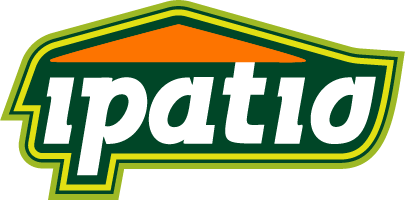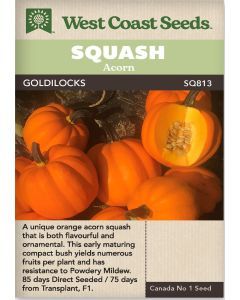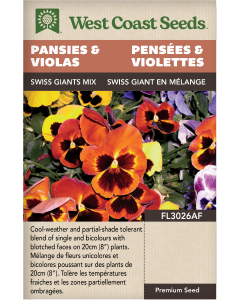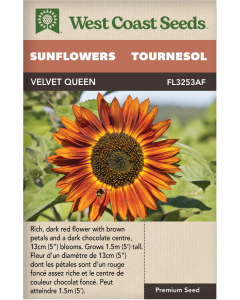Be the first to review this product
CERTIFIED ORGANIC. This parthenocarpic, early variety bears an abundance of 7-8cm (2.5-3 inch) fruit that are perfect for snacking. Mini-Me is a productive plant that performs well in the field as well as in greenhouses as it does not require pollination. The mini cucumbers are uniform with smooth skins and crisp, mildly sweet flesh. Harvest the cucumbers often so plants keep producing. An excellent choice to fill lunch boxes and crudités platters!
Product Details
CERTIFIED ORGANIC. This parthenocarpic, early variety bears an abundance of 7-8cm (2.5-3 inch) fruit that are perfect for snacking. Mini-Me is a productive plant that performs well in the field as well as in greenhouses as it does not require pollination. The mini cucumbers are uniform with smooth skins and crisp, mildly sweet flesh. Harvest the cucumbers often so plants keep producing. An excellent choice to fill lunch boxes and crudités platters!
- Parthenocarpic (no pollination required)
- Mini 7-8cm (2.5-3 inch) cucumbers
- Early with high productivity
- Smooth skins and crisp flesh
All About Mini-Me F1 Certified Organic
Latin
Cucumis sativus
Family: Cucurbitaceae
Difficulty
Easy
We Recommend
Olympian (CU400): All our cucumbers are excellent, but for a standard slicer for the home garden Olympian is a wonderful choice. It works just as well in a raised bed as it does under cloche protection. Trellis it or let the vines wander about over the soil.
For Urban Gardeners: Patio Snacker (CU381). This new selection stays very compact and bushy, but produces impressively large, very tasty fruits. Try Patio Snacker in containers in the balcony garden.
Season & Zone
Season: Warm season
Exposure: Full-sun
Timing
Cucumbers need very warm soil to germinate. If direct sowing, wait until mid-June. If weather turns cool and wet after that, just re-sow. Or start transplants indoors in individual peat or coir pots 3-4 weeks before transplanting out into warm soil. If starting indoors, use bottom heat. Transplant when the plants develop their third true leaf. If the plants are too big, they may experience transplant shock. Optimal soil temperature for germination (and transplanting): 15-30°C (60-85°F).
Starting
Sow 3-4 seeds 2cm (1″) deep in each spot you want a plant to grow. Thin to the strongest seedling. Space plants 23cm (9″) apart in rows 90cm (36″) apart.
Days to Maturity
From transplant date.
Growing
Ideal pH: 6.0-6.8. Choose a warm, well-drained soil. Raised beds work well. Add diolomite lime and compost or well-rotted manure to the bed and ½-1 cup of complete organic fertilizer mixed into the soil beneath each transplant. Cucumbers are vigorous and need lots of nutrition and water. Use plastic mulch, plant under floating row cover or cloches – anything to warm things up. Once the weather warms up, keep soil evenly moist.
Almost all cucumbers benefit from being trained onto a trellis of some kind. Some vines can reach 7 or 8 feet in length, so growing them upward onto a trellis makes good use of garden space. Fruits that grow hanging into space tend to be straighter than those that form on the ground.
Harvest
For a continuous harvest, make successive plantings every 2 to 3 weeks until about 3 months before first fall frost date. Keep picking the cucumbers regularly, because if they get too big, the plant will stop producing. About one month before first frost, start pinching off new flowers so plants channel energy into ripening existing fruit.
Seed Info
In optimal conditions at least 60% of seeds will germinate. Usual seed life: 3 years. Per 100′ row: 240 seeds, per acre: 35M seeds.
Diseases & Pests
Several diseases attack cucumbers, but problems with this plant are mostly caused by cultural practices that stress the plants. Make sure to keep the garden clean and tidy, remove diseased material and do not compost. Avoid overwatering and directly spraying water on to the leaves. Plant in a well-drained site and follow strict crop rotations. Whenever possible, use disease resistant varieties.
Aphids and thrips are indications of plant stress. Before running out to buy an insecticidal soap or other chemical solution begin to solve the problem by trying to figure what the stressors are and dealing with them. Predatory insects will be attracted to the site and will benefit greatly by an interplanting of Sweet Alyssum, dill, or cilantro. Our Crimson and Dutch White Clover planted along pathways between rows is excellent for attracting beneficial insects too.
Companion Planting
Plant cucumbers beside asparagus, beans, Brassicas, celery, corn, dill, kohlrabi, lettuce, onion, peas, radish, and tomatoes. Avoid planting near potatoes and sage. Both corn and sunflowers can act as a trellis for cucumbers to good effect. Dill will help cucumbers by attracting predatory insects, and nasturtiums is said to improve the flavour and growth of cucumbers.
| Brand | West Coast Seeds |
|---|---|
| Manufacturer Part Number | CU382A |
| UPC | 687704028297 |
| Family | Cucumbers |
| Days to Maturity | 45 |
| Certified Organic | Yes |
| Heirloom | Yes |
| Open Pollinated | No |
| Hybrid | Yes |
| Pack Options | A pack |
| Quantity Per Packet | 10 seeds |
| Package Language | English |
| Shipping Type | Seeds |















Login and Registration Form